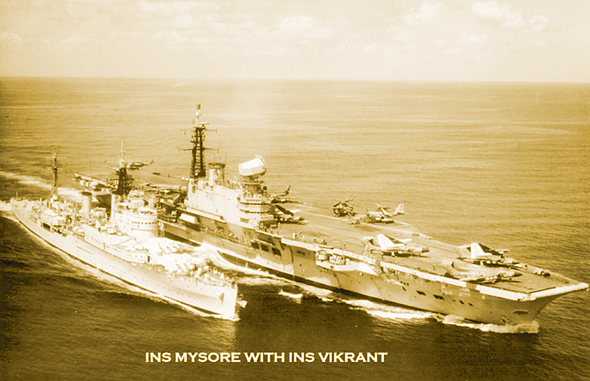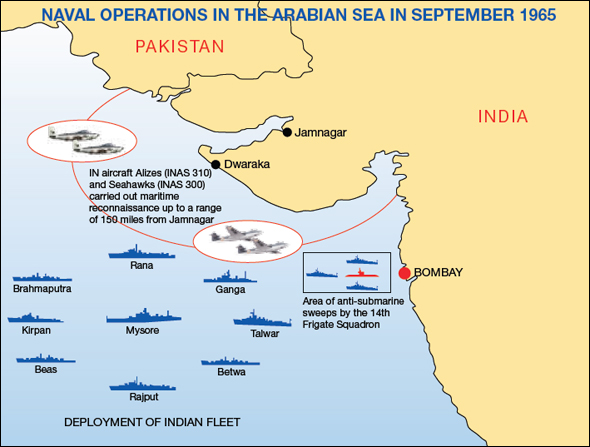INDIAN ARMED FORCES CHIEFS ON OUR RELENTLESS AND FOCUSED PUBLISHING EFFORTS

The insightful articles, inspiring narrations and analytical perspectives presented by the Editorial Team, establish an alluring connect with the reader. My compliments and best wishes to SP Guide Publications.

"Over the past 60 years, the growth of SP Guide Publications has mirrored the rising stature of Indian Navy. Its well-researched and informative magazines on Defence and Aerospace sector have served to shape an educated opinion of our military personnel, policy makers and the public alike. I wish SP's Publication team continued success, fair winds and following seas in all future endeavour!"

Since, its inception in 1964, SP Guide Publications has consistently demonstrated commitment to high-quality journalism in the aerospace and defence sectors, earning a well-deserved reputation as Asia's largest media house in this domain. I wish SP Guide Publications continued success in its pursuit of excellence.
- MoD initiates comprehensive review of Defence Acquisition Procedure 2020, pushes for defence reforms
- G7: The Swansong
- Kalinga Connect: South Asia to Polynesia
- Advanced MRSAM for India for a greater firepower
- Must Credit DRDO for Operation Sindoor, now what is next for defence R&D?
- Operation Sindoor | Day 2 DGMOs Briefing
- Operation Sindoor: Resolute yet Restrained
Special Feature
The Indian Navy and the Indo-Pak War of 1965
For 50 years we did not perceive the 1965 war as a military victory. The Navy was kept out of the conflict and both the Army and IAF acknowledge that strategic and tactical blunders converted the war into a stalemate. It was this perception that led to acceptance of a UN mandated ceasefire. Yes Pakistan certainly failed to achieve the objectives for which it started the conflict. Finally, military historians and analysts should decide whether 1965 was a victory or stalemate—not politicians.
—Admiral Arun Prakash, former CNS
After China’s attack on India’s northern frontiers in 1962, the Army’s hands were more than full and the Indian Navy had been charged with the garrisoning of the Andaman and Nicobar Islands.
Commencing 1964 onwards, Indonesia’s stance was markedly pro-Pakistan. Indonesian leaders started voicing claims to Great Nicobar Island, which was closest to Sumatra and there was an increase in the sightings of unidentified submarines and aircraft in the Andaman and Nicobar Islands. It was this vulnerability in July/August 1965 that impelled Naval Headquarters to keep the Indian Fleet in the Bay of Bengal for as long as possible so as to deter adventurist Indonesian naval moves.
The Indian Fleet comprising Mysore (flagship), Brahmaputra, Beas, Khukri, Kirpan, Kuthar and Ranjit sailed for the Bay of Bengal in end June 1965. It had been arranged for a British Submarine Astute to be available off Madras in July for anti-submarine training, after which it was planned that ships of the Fleet deploy off Andaman & Nicobar Islands, Calcutta and Visakhapatnam.
Accordingly, Mysore, Brahmaputra and Beas, after completion of the exercise off Madras, were deployed in the Andaman and Nicobar Islands in August 1965 while the remaining four ships remained deployed off Madras to continue the anti-submarine exercises. In end August 1965, Mysore, Brahmaputra and Beas proceeded to Calcutta.


As is well known, Pakistan had been committing violations of the Indo-Pak border throughout the summer months of 1965 and the frequency of these violations had increased further during the first week of August culminating in a large number of armed infiltrators crossing the ceasefire line in Kashmir on August 5, 1965. In spite of continued efforts made by India to ensure peace, the situation soon aggravated and the Indian Army had to take preventive measures in Kashmir to plug the entry points of these infiltrators. Since Pakistan was likely to extend the war to the Arabian Sea as well, Karachi being its main naval base, the Indian Navy decided to initiate necessary action to prepare the fleet for the probable war.
Thus, it was in the middle of the deployment of the Indian Fleet to the Bay of Bengal and before the second group of ships—Khukri, Kirpan, Kuthar and Ranjit—had finished exercising with the British submarine off Madras, that the Indian Fleet was immediately recalled to Bombay, as Pakistan Army crossed the international border on September 1, 1965, and advanced towards Akhnoor.
The Indian Navy’s role was the maritime defence of the western and eastern coasts and the island territories. The tasks envisaged were: first, to carry out sweeps off the West Coast of Pakistan to disrupt the Port of Karachi and inflict heavy damage on port installations; next, the destruction of Pakistan naval forces if ordered; third, provision of general support for the defence of the major ports on the West Coast; and fourth, the provision of general cover and protection to our merchant ships in the Arabian Sea, especially those plying to and from the Persian Gulf and the Red Sea.
India’s policy, however, was not to escalate the conflict by a direct confrontation at sea. Given the government’s determination to limit the scope of the conflict as much as possible, the role assigned to the Navy during the war was mainly a defensive one.
Nevertheless, the Indian Navy remained vigilant to ensure the safety of Indian ports, guard the country’s entire coastline and above all protect India’s shipping from interference by the Pakistan Navy. Whereas most of Pakistani shipping was carried on neutral bottoms, India’s shipping was largely borne by Indian ships—250 of them were owned by India, while only 30 merchant ships belonged to Pakistan.
Intelligence on the disposition of the Pak naval forces had indicated that the Pak submarine Ghazi was at sea and was likely to have been deployed off Bombay for anti-shipping operations and the Pak Fleet had been proceeding to sea every day for exercises and returning to its anchorage in the evening.
The Indian Fleet was led by the Flagship Mysore—a sleek cruiser powered by an 80,000 shaft horsepower steam plant with state-of-the-art command and control facilities. Mysore’s nine 6-inch guns, controlled by the latest fire control equipment, could deliver two-and-a-half tonnes of explosives a minute on the target. Mysore also had eight 4-inch guns for surface and anti-aircraft operations and twelve 40mm Bofors AA guns. In fact her punch and looks were legendary and she was popularly referred to as the ‘Queen of the Orient’.
Flying the flag of Rear Admiral B.A. Samson, Mysore sailed for offensive patrols on the West Coast, accompanied by Brahmaputra, Beas, Betwa, Khukri, Kirpan, Kuthar, Talwar, Rana, Rajput, Ranjit and Ganga.The Fleet carried out intensive patrols and sweeps in the Arabian Sea, in conjunction with the Navy’s aircraft, throughout the duration of the war. On one occasion, the Navy’s Alize aircraft sighted two Pakistani ships 95 km off India’s West Coast. The ships of the Indian Fleet at once pursued the enemy, who without giving battle, scurried back to Karachi. In fact, for most of the duration of the war, Pakistani Navy was ensconced in Karachi, seeking safety behind heavy shore defences.
The Indian Navy’s anti-submarine task force was keeping constant vigil and was particularly searching for the Pakistani submarine Ghazi, which was known to have closed to within 20 km off Bombay harbour. On two occasions, INS Kuthar, commanded by Commander D.S. Paintal, detected an underwater sonar contact of a possible submarine and launched attacks with full salvos from her anti-submarine mortars. The hide-and-seek went on for five continuous days and Ghazi was kept under continuous pressure by the Indian Navy’s ships and aircraft. Because of this relentless anti-submarine action, Ghazi, which was the only submarine in the entire subcontinent (the Indian Navy only acquired its first submarine in 1967), could not make any impact on the war.
Naval Operations in the Arabian Sea in September 1965
Seahawk aircraft of the Indian Naval Air Squadron (INAS) 300, then located at Jamnagar in Gujarat, were placed under the operational control of the Indian Air Force on September 2, 1965, for offensive action against the enemy. All Naval Air Squadrons—INAS 300 (Seahawk fighter squadron), INAS 310 (Alize anti-submarine aircraft squadron), INAS 550 (Seahawk and Alize trainer squadron) and INAS 551 (Kiran jet trainer squadron)—were deployed for reconnaissance and anti-shipping roles and for the air defence of Indian seaports.
On the eve of the ceasefire on September 23, 1965, a false statement broadcast by the Pakistan radio claimed that an Indian frigate, INS Brahmaputra had been sunk in the Arabian Sea by the Pakistani submarine Ghazi. After the war, the Indian Navy invited the world press and naval attachés of all countries accredited to India, to have a cup of tea onboard Brahmaputra at the Naval Dockyard, Bombay, which was hosted by the Fleet Commander, Rear Admiral Samson.
In his letter to the Navy, the then Defence Minister Y.B. Chavan expressed the government’s appreciation for the role played by the Navy during the war as follows:
“I greatly appreciate the silent but efficient role which the Navy played in the defence of the country. The Navy protected islands which were vital to our security, guarded our ports and the long Indian coastline. All merchant ships destined for our ports reached safely and our international trade was not permitted to be interfered with by the Pakistan Navy. I take this opportunity to emphasise again that the Navy has done and achieved all that the government desired of it, within the bounds and compass allotted to it.”





